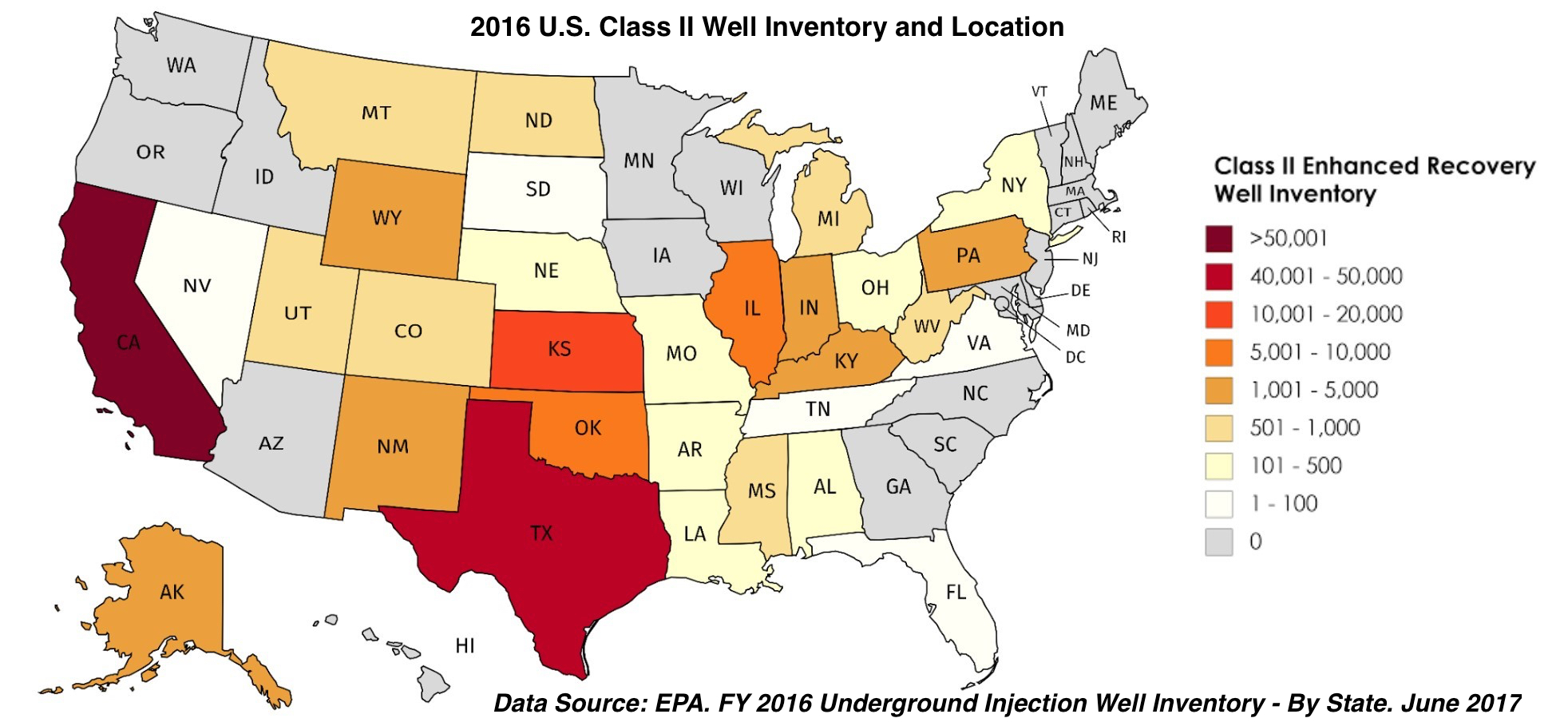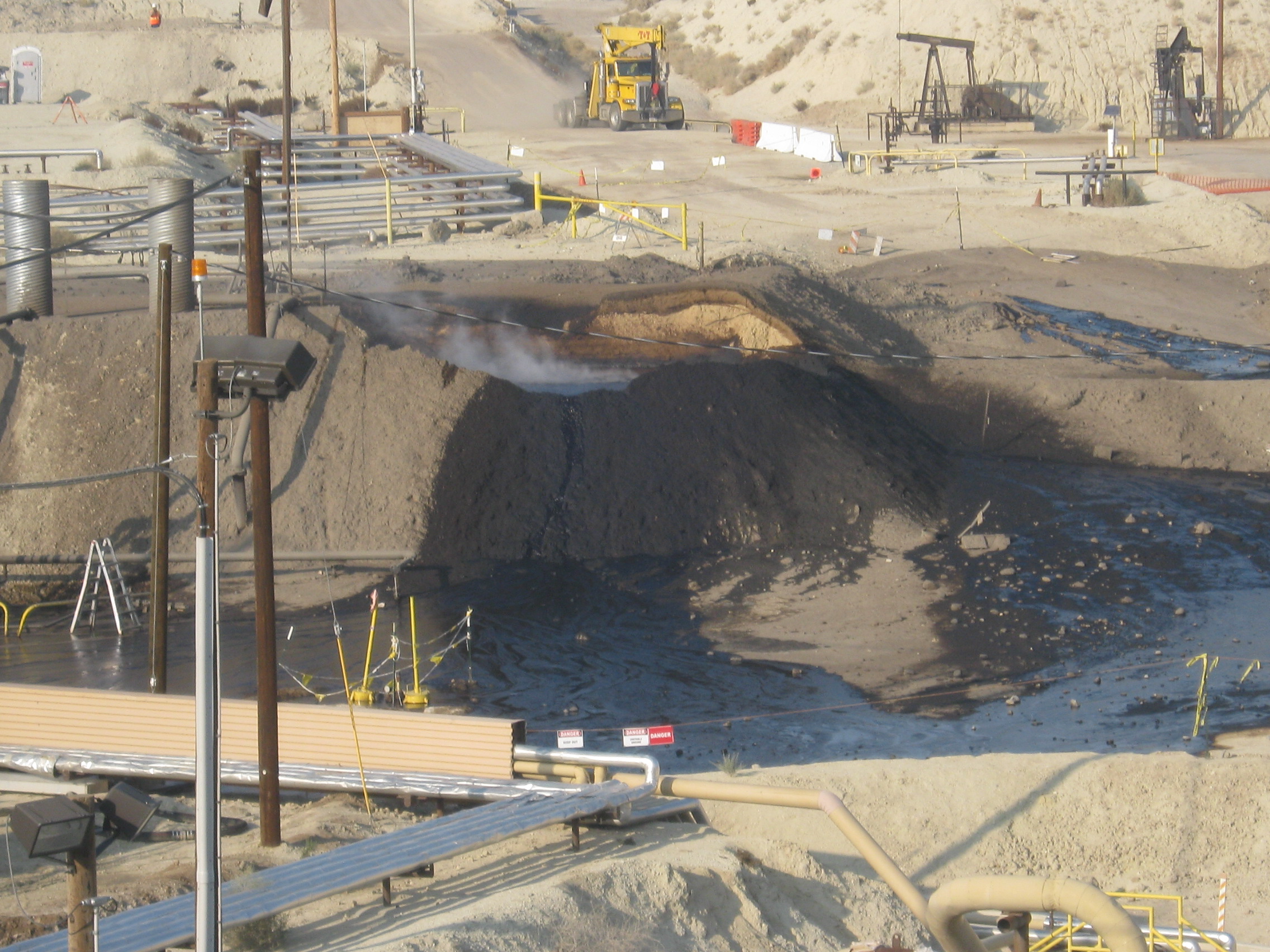An overview of Class II well trends and regulations in EPA’s Underground Injection Control Program
Download the report and fact sheet below.
Enhanced oil recovery (EOR) involves the injection of fluids and/or gases underground to improve the flow of oil and gas to the surface. There are over 145,000 active and idle Class II EOR injection wells, more than half of which are in California and Texas. It is the most common oil recovery practice in the United States, accounting for an estimated 60% of total U.S. crude oil production.
This report provides an overview of the major technologies, environmental impacts, and regulatory schemes associated with enhanced oil recovery and provides recommendations for improving the protection of underground sources of drinking water.
Despite its prevalence, EOR technologies and the dangers they pose to the environment are largely unknown to the public. EOR presents real threats to drinking water, yet oversight of these practices has lagged. The regulations on EOR activities are decades old and fall short of providing sufficient safeguards for groundwater. State and federal regulators tasked with implementing these outdated rules lack the proper funding and staffing levels for adequate oversight, and significant data and monitoring gaps impede their ability to detect problems. The lack of even a uniform definition of EOR and related technologies means that data is often unreliable and incomplete.
The U.S. Environmental Protection Agency regulates EOR under the Safe Drinking Water Act (SDWA) Underground Injection Control (UIC) Program. Established in 1980, the UIC program is a necessary part of oil and gas regulation in the United States. EOR activities are regulated under the UIC Class II Program because they involve the injection of fluids into the subsurface to increase oil production.
The UIC program plays a critical role in protecting drinking water resources, yet receives little public attention and outside scrutiny. However, digging beneath the surface reveals numerous regulatory problems with both federal and state UIC programs. Furthermore, a general lack of reporting of incidents may mask the severity of the UIC program’s underlying issues.
Other hydrocarbon recovery activities, such as hydraulic fracturing and offshore drilling, have received far more media and public attention. Enhanced oil recovery, on the other hand, has enjoyed relative anonymity, which has in part resulted in no substantial review of its regulatory oversight since the 1980s.
EPA’s oversight of state UIC programs is underfunded and understaffed. EPA does not collect comprehensive and comparable data on EOR on a national level. The agency is unable to adequately conduct sufficient oversight of EOR. Federal regulations that set the minimum standards for injection wells have not been updated in decades and fail to provide adequate safeguards.
Data collection and management at the state level is neither satisfactory nor uniform, inhibiting proper oversight. Additionally, states prepare little information about EOR for a public audience, and state regulatory websites vary in both content and quality. State regulatory agencies are often not equipped with sufficient staffing or budgetary resources to cope with daily responsibilities that have been increasing since UIC’s inception. Much like the federal minimum standards, state UIC regulations, in many cases, are out of date and inadequate.

Based on these findings, we make policy recommendations in the following areas:
Recommendations for EPA:
- Launch an independent study of EOR’s environmental threats, data gaps, regulations and oversight.
- Update the UIC Class II regulations and minimum standards.
- Establish a definition of enhanced oil recovery and associated technologies.
- Improve data collection and dissemination for Class II activity.
- Take a more active role in oversight of state primacy UIC programs, including regular audits.
- Work with Congress to increase the UIC budget and address staffing constraints.
Recommendations for states:
- Update state regulations and oversight for Class II wells to ensure compliance with EPA minimum standards, and improve transparency and monitoring requirements.
- Invest in improved data management and publication.
- Increase funding for agencies with Class II UIC primacy.
- Improve management of idle, plugged and abandoned, and orphaned wells.

